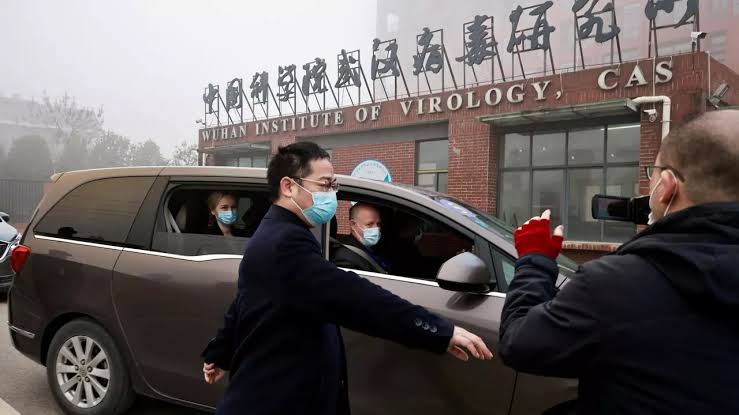By Haruna Gimba
The World Health Organization (WHO) investigators have visited a research center in the Chinese city of Wuhan that has been the subject of speculation about the origins of the coronavirus.
A team member said they’d intended to meet key staff and press them on critical issues.
The WHO team’s visit to the Wuhan Institute of Virology was a highlight of their mission to gather data and search for clues as to where the virus originated and how it spread.
“We’re looking forward to meeting with all the key people here and asking all the important questions that need to be asked,” zoologist and team member Peter Daszak said, according to footage run by Japanese broadcaster TBS.
Reporters followed the team to the high security facility, but as with past visits, there was little direct access to team members, who have given scant details of their discussions and visits thus far.
Uniformed and plainclothes security guards stood watch along the facility’s gated front entrance, but there was no sign of the protective suits team members had donned Tuesday during a visit to an animal disease research center. It wasn’t clear what protective gear was worn inside the institute.
The team left after around three hours without speaking to waiting journalists.
At a daily briefing, Chinese Foreign Ministry spokesperson Wang Wenbin said the experts also held talks Wednesday with experts from Huazhong Agricultural University.
“It should be noted that virus traceability is a complex scientific issue, and we need to provide sufficient space for experts to conduct scientific research.
“China will continue to cooperate with WHO in an open, transparent and responsible manner, and make its contribution to better prevent future risks and protect the lives and health of people in all countries,” Wang said.
Following two weeks in quarantine, the WHO team that includes experts in veterinary medicine, virology, food safety and epidemiology from 10 nations has over the past six days visited hospitals, research institutes and a traditional wet market linked to many of the first cases.
Their visit followed months of negotiations as China seeks to retain tight control over information about the outbreak and the investigation into its origins, in what some have seen as an attempt to avoid blame for any missteps in its early response.
One of China’s top virus research labs, the Wuhan Institute of Virology built an archive of genetic information about bat coronaviruses after the 2003 outbreak of Severe Acute Respiratory Syndrome. That has led to unproven allegations that it may have a link to the original outbreak of COVID-19 in Wuhan in late 2019.
China has strongly denied that possibility and has promoted also unproven theories that the virus may have originated elsewhere or even been brought into the country from overseas with imports of frozen seafood tainted with the virus, a notion roundly rejected by international scientists and agencies.




